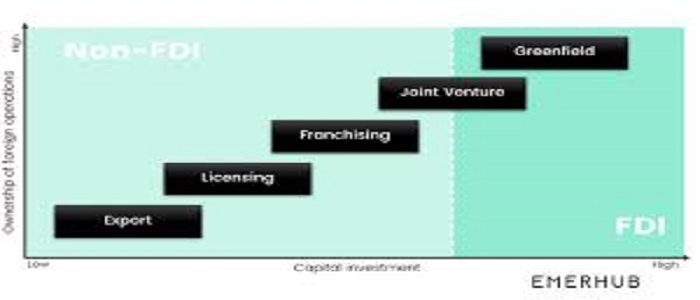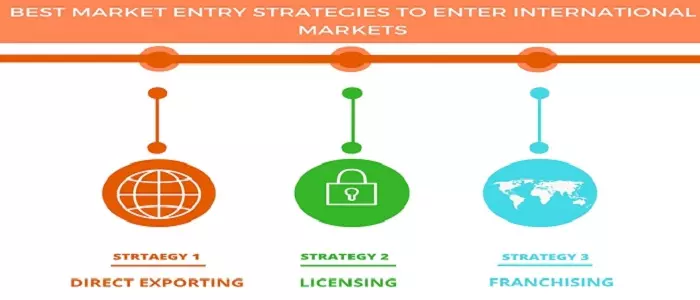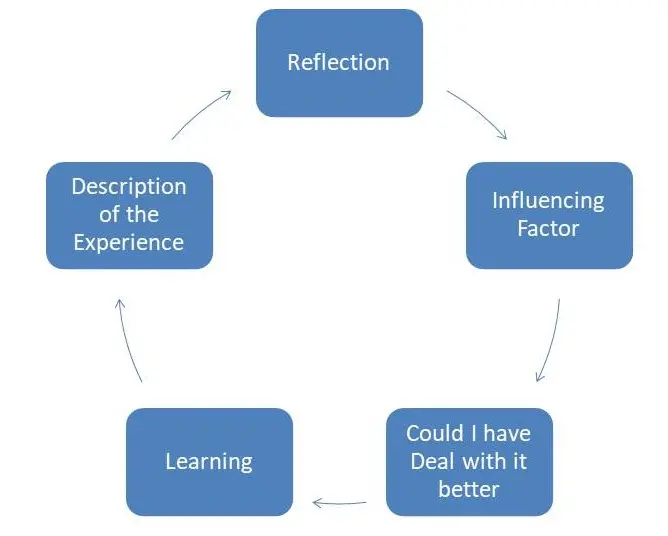Halfords Marketing Strategy for International Expansion
Question
Task:
Assessment Part 1: Individual Report
Overview:- The purpose of this part of the assessment is to allow students to apply their newly acquired knowledge of international marketing to a specific foreign market. The aim of the report is to critically analyse and report how a local company in its home country can internationalise marketing operations to a newly discovered host country market (international market). The focus is very much on analysis and the application of relevant concepts to three main components as outlined below:
- PESTLE Analysis:- A detailed PESTLE analysis of two potential host countries is required. You are required to evaluate these presenting new markets and justify ONLY ONE final market based on the PESTLE analyses you have performed. You must undertake a thorough comparative analysis of the two selected markets which should be ideally located within the same continents.
- Deciding of Market Entry Choice:- In this part of the group report, students should identify, and justify using relevant concepts or factors to determine the most suitable mode of entry to a new foreign market. Furthermore, students should report in detail the business operational aspect of their selected entry mode. You are required to report in detail only one entry mode choice.
- Designing of International Marketing Programme (7 Ps must be used):- In the third part of this report, students are expected to apply in detail the 7 marketing mix programme (product, place, promotion, price, people, physical evidence and process) to develop a comprehensive marketing campaign in your identified target country. Specifically, the report should take into considering the macro environmental factors in PESTLE framework, nature of the company products, services and increasing level of competitions in the foreign market. The report task must include and justify the planned levels of standardisation and adaptation of the marketing mix in the newly identified foreign target market.
Company Choice and Potential Target Market Countries
You are required to identify a company from any part of the world that has service dimensions such as Boots, Fashion Retailers, Heavenly Desserts, Greggs, Maryland Chicken, Five Guys but not limited to these companies. Subsequently, you should identify two potential target country markets you want your selected company to expand its international marketing operations. Note, that your selected company must not currently have its marketing activities in your selected countries.
Assessment Part 2 – Individual Critical Reflection
This should be written in an essay format and submitted individually by the student. Each student is expected to reflect on these two key areas from their first assessments attempt. Note: student is required to use a particular reflective model or theory to shape the write up of their reflective essay.
- Reflection on your group report and individual essay result and feedback:- By now you have seen your grades and feedback for your assessment. I want you to reflect on your results, identifying what went well and what did not go well in your assignments. Here, you will be assessed on your ability to clearly identify and describe your feelings and evaluate what was good and bad in your first assessment attempt and how this has affected your overall mark. Your genuine evaluation of your performance is essential.
- Learning from assessment one. Here you are required to analyse what you have learned, conclusion and action plans to make improvements if you have another chance to do the report again or if you did it again, what are the key improvements you have made to the report.
Answer
Executive Summary
Internationalizing the company is possible with the best market entry modes and after having a deep study on the macro environmental factors of the target country. In this assignment, Halfords will enter the target market Australia with franchising strategy as market entry strategy. Halfords marketing strategy will redesign the marketing mix elements so that it can lure the customers and at the same time make changes that will be sustainable in nature. The second part of the assessment has been a reflection on the way the report has been developed and the reflective model that has helped to overcome the issues.
Assessment 1: Individual Report
Introduction and Company Background:- The idea of entering a new market is a complex thought which requires the particular company to be cautious of various factors and consider certain it own capabilities and resources (Peloza et al., 2015). Any company developing a strategy of opening or expanding the company in the international market will have to undergo deep research and strategic planning. Expanding into international market, companies will have to face much uncertainty and therefore it is suggested to undertake strategic measures like studying the PESTLE analysis helping to know the macro environmental factors. Moreover entering a new market requires the parent company to know and identify the market opportunities and the threats. The assignment will explore about the market expansion idea of Halfords being a British retailer of car related parts and accessories. The target markets of this company have been chosen to be India and Australia where one is developed and the other one is developing. Hence Halfords marketing strategy will have to research over the two host countries strategically before entering in any of the market.
Halfords Group Plc in British is known for dealing with car parts and the accessories. In Ireland and in United Kingdom, the company has been operating with small number of employees which is about 10,000 by 2018. MOT repairs and other services are also offered by them through Halford Auto centre (Halfordscompany.com, 2019). This company has also being listed in the London Stock Exchange. With its services, the company has by the year of 2018 has earned revenue of about £1,135.1 million (Halfordscompany.com, 2019).

Figure 1: Halfords Plc Ltd
(Source: Halfordscompany.com, 2019)
For entering either India or Australia, Halfords have to know the market opportunities and the factors which will help in analysing the decision. The company currently has been operating in about 451 stores with 317 garages and with other facilities. Halfords marketing strategy has the intention of relocating or bringing it to the "right size" each year and hence with the growing competition it is good idea to internationalize. PESTLE analysis, entering the market and about the marketing program will be focused in the later section. In the competitive era, it is good idea to internationalize but at the same time it is risky enough. Macro environmental factors once known helps in determining which strategy to choose or which market is better than the other gaining windfall profits.
PESTLE ANALYSIS
Halfords marketing strategy has been entirely based on three objectives and those are market, customer and competitive context (Halfordscompany.com, 2019). This has led the company desire the idea of expanding the market internationally. In UK, the company has providing the customers with new experience of shopping that too in a specialist manner. For 11 years, the company has made investment to save it for future and thus the era has come for designing the stores and thinking something bigger.
Halfords with the idea of entering any of the host countries will have to undergo PESTLE analysis of the two countries. Macro-environmental factors helps in evaluating the opportunities and enter the market in the right manner.
|
Factors |
India |
Australia |
|
Political |
India has been considered politically as one of the powerful country. The political environment is stable in India. There is a culture of tolerance in politics that has led it to being stable in nature (Karunakaran, 2018). This has been the reason for many to have Foreign Direct Investment. Corruption has been considered as one of the area of concern. However, the increasing awareness of the public and measures by the government has been helping in dealing with corruptions. |
In Australia, the Queen is just a body and the actual powers reside with the Governor. This country is particularly in connection with many organizations like the World Trade Organization, G2O and Commonwealth of Nations. Australia despite of having good relationship with US is being criticized by UN and New Zealand. Political situation is stable. |
|
Economic |
In India, the current corporate tax rate is 30% by the year of 2018. Over the years, the country has noticed frequent changes in the tax rates. For the past few years, India has been experiencing stable growth in the GDP. India has been a welcoming country for opening doors for investors and foreign companies to have growth. |
The business climate is favourable for the companies in opening up new start ups and good opportunity for investors too (Autio and Fu, 2015). The economic policies have been reformed and led Australia to be calculated among the top rated countries. The economy has grown by 2% in the recent years. In this country, the people themselves are choosing "pure investment". Investors can here use "money down" payment option to buy the land as soon as possible and again sell it for more profit (Jordà et al., 2016). Currency exchange rates are favourable for the foreign companies including America thus making it an easy choice. The tax rate in this company is about 30%. However, this does not affect the company at all. Moreover, if the company has turnover which is lower than $25 million then they are eligible for the lower tax bracket. |
|
Socio-cultural |
Socially, the country is very much known for the industries and the consumers. It has gigantic consumer of about around 1.2 billion people. For multinational and foreign companies, it is a great source of opportunity. India moreover offers cheap labour and according to IBEF (2018), it will reach to 160 - 170 million (Besley, 2015). The standard of living for the country is improving and it has customers mainly from the middle class sector having good opportunity to grow. |
Consumer wise, Australia do have smaller population like by the year 2018 it has been 23 million. Australia is known to be a multicultural country and multiracial as well. There actually three social classes that companies need to know and those are working, middle and upper class. |
|
Technological |
In the world, India is also developing in being called the most technologically advanced nation. It is also known to be the 3rd most technologically developed country. It has been evident that tech giants like Facebook, Apple and Microsoft are investing in India. It has high IT infrastructure and high skilled employees. |
Technological innovation has been rooted in Australia and no doubt this has been luring for foreign companies (Hajkowicz et al., 2016). It has the tendency of adapting new technology frequently. However, some issues exist with the technological research and the policies. New law has been passed regarding the encryptions which have to be followed. Here, the government has given the police the right to access somebody's encrypted messages. |
|
Legal |
Based upon the business needs, there are certain legal rules as well. Foreign companies or investors can set up firms easily. However, Companies Act 2013 has to be followed at the time of operating in the land of India. The employee relations are regulated by many labour laws which need to be known like the Employees’ State Insurance Act 1948 (ESI Act), Maternity Benefit Act 1961 (MBA) and Payment of Bonus Act 1965 (PBA). |
Australia is very concern with trade between businesses and consumers and so have strict fair trading laws consumer laws and competition laws. The Fair Work Act 2009 is a legislation that companies have to follow (Stewart and Stanford, 2017). |
|
Environmental |
Some of the environmental problems still exist in India like water, air and other pollutions. It is difficult sometimes for expatriates to adjust in these circumstances due to the weather. |
Australia has a brilliant biodiversity and this is very much suitable for the expatriates (Cheer and Lew, 2017). Many overseas visitors visit this place many times and this is also profitable for businesses. Climate change is one of the issues for companies operating here. |
Post studying, Halfords located in UK will find it comfortable and strategic to internationalize in Australia. The economic policies and the currency exchange rate will be a golden opportunity to for the business to gain profit. Australia has environmental wise, a suitable surrounding and it will not be difficult for the employees as well. Since Halfords marketing strategy has been dealing with car parts, strategically it has nothing to do with the climate change issue. Moreover, Australia will give the chance of having innovation in the operations and services and adapt new challenges that will take the company to new heights. India though has favourable points but for Halfords marketing strategy, Australia will be the better option to internationalize. At the time of setting up chains in Australia, the company has to follow the Fair Work Act 2009. Moreover, the pricing factors need not be economical since the working classes belong from standard income background.
Halfords marketing strategy with the idea of setting up of industry in Australia need to be accustomed of the legal policies so that it can have fair trading with the businesses and the clients. If the turnover of Halfords will be about $25 million then the company will be eligible for low tax bracket. These facilities are not available in India and hence it would be better for Halfords to go for Australia for expansion.
Deciding on the International Marketing
Market entry strategies are the deadliest and the most important choice for a company (Ahi et al., 2017). For the company, the management has to be skilful enough and identify the most suitable entry mode. The different entry modes of market strategies are elaborated below:
Export: It is actually selling the domestic products to the cross border area and thus gaining a strategy of entering the market. It can be direct, indirect and cooperative exporting. Through any kind of exporting activity, an agent is chosen from the external country and the product is sold through the agent. It is cost effective and also considered as the easiest way of entering the market.

Figure 2: Best entry modes
(Source: Ahi et al., 2017)
Licensing: In this entry mode, agreement is made with the cross border country or the target country that allows the company to use the property of the licensor. The property though is available in intangible modes. The country interested in expanding into foreign market can sign an agreement and pay a fee in exchange. This entry mode is chosen by many as it is less risky in operation and low exposed to any kind of political and economic condition. Moreover with Licensing, companies have high return on investment. Walt Disney has been one of the successful companies using licensing as one of the market entry strategy. However, Licensing with its benefits also has its own limitations.
Franchising: It is type of licensing where the international company gives the local company the right to use the trademark (Hoffman et al., 2016). Through franchising, the franchisors already have a hold on a successful strategy. It is where the owner of the business can enter the market by making the dealer sell it having the local knowledge of the market. McDonald's and Pizza Hut are example of Franchising and entering the market. Just like Subway, any company can licensed company from the international market having prior knowledge of the business and thus earns profits.
Joint Venture: Joint venture has been the low cost risks entry method where the company can share the risks with other parties as well. However, for single owned companies this method is not adaptable as it has entered into agreements and also suffers if the goals are not met or other situation.
Wholly owned subsidiary: This is the form of market entry strategy where the organization enters in the foreign market with 100% or full ownership of the entity (Hoppner and Griffith, 2015). The organization can come about either through green filed operations or through acquisitions. Acquisition is where an organization purchases an entirely new foreign market. Greenfield is where the company is newly created with new foreign identity.
For Halfords marketing strategy, it is best to enter the market would be through Franchising as one of the market entry strategy (Burton and Cross, 2015). Franchising is actually like an agreement where the market with being licensed want to enter the new market with low risks factors. The company like Halfords selling the business will be called Franchisor and the partner company having knowledge of the international market as franchisee. The franchisee can offer a lump sum amount to the franchisor in return of the service. The franchisor that will be Halfords will be gaining benefits like the franchisee uses the capital on own for set up. The publicity of the brand will rise hence helping the company to enter market smoothly.

Figure 3: Market Entry Strategies
(Source: Burton and Cross, 2015)
Designing of International Marketing Programme
Australia being one of the convenient target markets, Halfords can enter the market with Franchising as one of the entry strategy. However above these considerations, it is important to attract the customers of the target market. Halfords marketing strategy need to bring about modification in the products design and implement innovation in the marketing strategies to increase the market position in Australia post entry. The marketing program can be designed with the help of the Marketing Mix that will be framed as per the standardization of the chosen target market (Massingham and Pomering, 2017).
Product: Halfords marketing strategy will adapt a convenient product designing strategy by introducing new feature with the products. Halfords will sell electronic bicycles named “E-bikes” having special feature. The company will design special tools that will be installed in the bicycles which will be testing the heart beats of the individuals using it. If there is any change in the body, there will be an indicator ringing in immediately (Išorait?, 2016). This “E-bike” will have additional feature like a small electronic plate in the front of the cycle so that people can not only charge the mobile phones but also listen to music at any point of time. These features will be made keeping in consideration of the taste of the customers. Australia has been adapting innovation every now and days and most of the customers are from the working class so this “E-bike” will be an excellent product to be used. The product will be in a way innovative and multi tasking in nature.

Figure 4: “E-Bikes” for the customers
(Source: Išorait?, 2016)
Price: Australia has been from the social classes being identified to be having a good standard of living and high income. However, quality is the concern of the consumers for most of the products. Hence to have the market position on a sustainable basis, Halfords marketing strategy can adapt “Value-based pricing” strategy as it will make the customers feel for what they are paying (Augustovski and McClellan, 2019). The goods for which the customer will be paying is up to their value and so they will be paying the price and this is the most suitable and strategic pricing scheme in the international market.
Promotion: Halfords marketing strategy can adapt the promotional strategy of having social media promotion and also use Customer Appreciation Events as the new promotional strategy. In the social media phase, Halfords will be using Instagram and Facebook for uploading images of the products and additional information about the company. Customer Appreciation Events will be held in-store and it will be with door prizes and free refreshments (Kipfelsberger et al., 2015). Appreciating the customer without purchasing of any item would be an excellent on the point strategy of promoting the "E-bikes".
Place: Here, Halfords marketing strategy will opt for franchising strategies of selling the E-bikes to the consumers. However, this new products will also be available through online distribution.
Process: The products will be sold out to the consumers either through online distribution or through offline distribution channel.
Physical Evidence: The receipts and the website will be the physical evidence of the company that will be gaining the trust of the consumers.
People: Here, the main people will be employees working in the unit and manufacturing the products. In the target market, Halfords marketing strategy will also employ some local people that will be good for the business.
Recommendations
Halfords therefore after making a PESTLE analysis and studying the market entry strategies, it is convenient to choose Australia as one of the target market and Franchising as the market entry strategy. It is recommended that Halfords marketing strategy makes the designing of the various elements of the marketing mix as has been elaborated. It is suggested to design the products as per the needs of the people and enter smoothly to have a sustainable position in the market. Halfords marketing strategy will be operating to provide quality products at valuable pricing.
Assessment 2: Individual Critical Reflection
From the Halfords marketing strategy report, it can be reflected that entering international market is not an easy tasks rather the management needs to be strategic and skilful enough while making decisions. Simply making changes in the products will not work, here the management has to decide on the market entry strategy as well as make decisions regarding the external environment of the target market. The Halfords marketing strategy report will be a lesson for those companies willing to expand in the international countries. Internationalization requires the company to frame a designing program of the elements of the marketing mix in a new form and take changes to lure the customers of the foreign countries.
In the meantime, while doing the report I have undergone a realization that there are some areas where I still need to more accurate in framing the report. I have found that I have a good skill of drafting the information that I have taken from the sources however, I was not able to frame it in sequence. On getting a chance to do the Halfords marketing strategy report once again, I would certainly start by first reading the concept. As soon as I realize that the topic was not easy for me and I was having trouble in getting through the important points, I adapted John’s Reflective Model. Through the model, I realized that I have some issue regarding maintaining the time (Nicol and Dosser, 2016). At the time of collecting ideas, I am fast but during the time of framing the final draft I was not able to maintain the timeline and it was taking lengthy time period. I started making it a point of finishing every topic within an hour and set aside half an hour for going through the points that have been written.

Figure 4: John’s Reflective Model
(Source: Nicol and Dosser, 2016)
I could have dealt with it better by looking at the points in the sources, identifying the suitable points and then wrote in the final draft and this could have saved time. I have learnt that for time management, one need to learn the relevant strategy like the one I have learnt. This experience has been helpful and will be for my future studies. Through the reflection model, I have undergone reflection of what was not going correct and later made a note of it. I had the issue of time management which I sorted out with the help of learning that by developing an Action Plan it will be easy. Through the Action Plan, it is recommended that each activity is planned out and time management is possible. Another issue which I located was problem solving (Smith and Roberts, 2015). Problem solving issue can be after following the reflective model can be sorted out by seeking books and sources. There are ample sources that can be followed to get ideas about the factors and seek solution in an apprehensive manner.
From the reflective model, one can reflect on the issues that have been found at the time of working out with the Halfords marketing strategy report. Through learning, I have been able to learn the ways like the developing of the Action Plan or the idea of looking for the right articles for the presentation of the report. This has helped me in making the report and finally complete the report as it has been required within time. I have learnt that it is better to frame the points in memory and then draft the final Halfords marketing strategy report which will be easy and convenient. Looking for points in the sources will create and enhance the knowledge and through the report formation, I have learnt the way of framing answers and also find out relevant sources. Upon next time, I will certainly look for the main articles to be followed and write it down in a paper so that it will be easy to refer to it for the main paper.
Conclusion
From the report, it is clear that for any company be it small or medium; it is required to have good knowledge of the marketing operations. Without the knowledge of the marketing operations, the business cannot proceed successfully in the competitive era. It is essential that the marketing manager of the responsible company takes the ownership of studying the macro environmental factors which will help the company from facing negative situations. The assignment has shown the various ways to enter the international market which Halfords marketing strategy can adapt for expanding. Even after expanding in the market, the marketing mix elements will undergo a change as per the requirement of the target country.
Halfords marketing strategy assignments are being prepared by our marketing assignment help experts from top universities which let us to provide you a reliable assignment help online service.
Reference List
Ahi, A., Baronchelli, G., Kuivalainen, O. and Piantoni, M., 2017. International market entry: How do small and medium-sized enterprises make decisions?. Journal of International Marketing, 25(1), pp.1-21.
Augustovski, F. and McClellan, M.B., 2019. Current policy and practice for value-based pricing. Value in Health, 22(6), pp.S4-S6.
Autio, E. and Fu, K., 2015. Economic and political institutions and entry into formal and informal entrepreneurship. Asia Pacific Journal of Management, 32(1), pp.67-94.
Besley, T., 2015. Law, regulation, and the business climate: The nature and influence of the World Bank Doing Business project. Journal of Economic Perspectives, 29(3), pp.99-120.
Burton, F. and Cross, A.R., 2015. A reappraisal of franchising across national boundaries in foreign market entry mode analysis. In Proceedings of the 1993 Academy of Marketing Science (AMS) Annual Conference (pp. 638-642). Springer, Cham.
Cheer, J.M. and Lew, A.A. eds., 2017. Tourism, resilience and sustainability: Adapting to social, political and economic change. Routledge.
Hajkowicz, S.A., Reeson, A., Rudd, L., Bratanova, A., Hodgers, L., Mason, C. and Boughen, N., 2016. Tomorrow’s digitally enabled workforce: Megatrends and scenarios for jobs and employment in Australia over the coming twenty years. Australian Policy Online.
Halfordscompany.com. (2019). Home - Halfords Group plc. [online] Available at: https://www.halfordscompany.com/ [Accessed 15 Aug. 2019].
Halfordscompany.com. (2019). Strategy - Halfords Group plc. [online] Available at: https://www.halfordscompany.com/about-us/strategy/ [Accessed 15 Aug. 2019].
Hoffman, R.C., Munemo, J. and Watson, S., 2016. International franchise expansion: the role of institutions and transaction costs. Journal of International Management, 22(2), pp.101-114.
Hoppner, J.J. and Griffith, D.A., 2015. Looking back to move forward: A review of the evolution of research in international marketing channels. Journal of Retailing, 91(4), pp.610-626.
Hoppner, J.J. and Griffith, D.A., 2015. Looking back to move forward: A review of the evolution of research in international marketing channels. Journal of Retailing, 91(4), pp.610-626.
Išorait?, M., 2016. Marketing mix theoretical aspects. International Journal of Research–Granthaalayah, 4(6), pp.25-37.
Jordà, Ò., Schularick, M. and Taylor, A.M., 2016. The great mortgaging: housing finance, crises and business cycles. Economic Policy, 31(85), pp.107-152.
Karunakaran, K.P., 2018. Religion and political awakening in India. Meenakshi Prakashan (1965).
Kipfelsberger, P., Bruch, H. and Herhausen, D., 2015. Energizing Companies through Customer Compliments. Marketing Review St. Gallen, 32(1), pp.80-89.
Massingham, P.R. and Pomering, A.A., 2017. Introducing Knowledge Management to the Marketing Mix.
Nicol, J.S. and Dosser, I., 2016. Understanding reflective practice. Nursing Standard (2014+), 30(36), p.34.
Peloza, J., Merz, M.A. and Chen, Q., 2015. Standardization Vs. Localization of Firms’ Corporate Philanthropy Strategies when Entering Foreign Markets. In Proceedings of the 2008 Academy of Marketing Science (AMS) Annual Conference(pp. 295-295). Springer, Cham.
Smith, J. and Roberts, R., 2015. Reflective practice. Vital Signs for Nurses: An Introduction to Clinical Observations, pp.222-230.
Stewart, A. and Stanford, J., 2017. Regulating work in the gig economy: What are the options?. The Economic and Labour Relations Review, 28(3), pp.420-437.
Vogler, J., 2016. Climate change in world politics. Springer.
Get Top Quality Assignment Help and Score high grades. Download the Total Assignment help App from Google play store or Subscribe to totalassignmenthelp and receive the latest updates from the Academic fraternity in real time.












